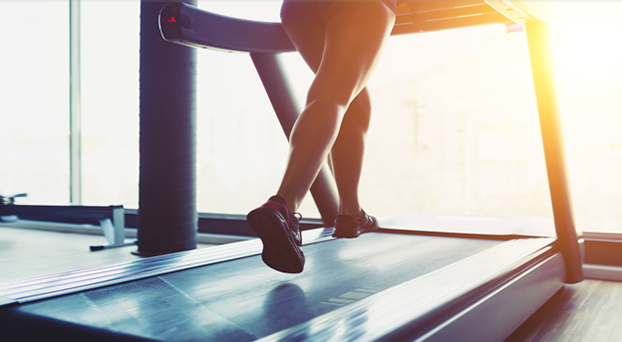Running & Gait Analysis
If you are an avid runner, you may have heard of something called a gait or running analysis.
Like many athletes, runners are motivated by the fundamental need to improve their ability to perform. Whether you’re a competitive runner or not, wanting to run better, faster, or further can be worked on with the help of a running analysis.
A gait analysis helps analyse running form, which provides professionals with insight into elements that can improve endurance, speed, and performance. It is also helpful for clinicians to identify running abnormalities in the gait cycle. In other words, it is a tool used to assess the way in which you walk and run.
When runners seek medical attention, clinicians tend to neglect watching them run during the recovery process. A running analysis will help formulate a complete picture on how the runner got injured in the first place.

Benefits Of A Running Analysis
A gait analysis can be beneficial in identifying any issues or misalignments during running that have the potential to cause injuries and inefficiencies in the future. Monitoring your running process can help you avoid health risks, which will benefit your performance in the long term.
Your analysis can shed light on gait patterns — where you carry your weight, your stance, swing, and foot rolls. Any inefficiencies or biomechanical aspects of your running will be closely examined, providing ample information for next steps.
A gait analysis is effective in:
- Enhancing performance in the long run
- Preventing or reducing risks of injuries
- Improving your rehabilitation process
Running Analysis Support In Our Clinic
Whether you’re a runner or not, having a gait analysis done can be incrementally beneficial to your long-term health and performance. At Rapid Physiocare, we focus on the treatment and management of weight issues, spinal problems, musculoskeletal and chronic conditions. Our team of experienced physiotherapists are equipped to work alongside you in detecting and managing any pain issues you may have.
Seek support from our team of professionals. Learn more about our expertise and services here.
Frequently Asked Questions
Is it worth getting gait analysis for running?
Yes — often it is worth it, especially if you have persistent discomfort, a recent injury, sudden performance limits, or specific race goals. A good gait analysis, which includes video and clinical strength/mobility screen,can help toidentify inefficient mechanics or asymmetries that may be causing pain or wasting energy, and gives a clear, personalised plan Think of it as an assessment that points to a focused rehab or training plan — not a one-time “fix.”
Quick practical steps: If you have repeated injuries or is looking for faster, safer progress, book a clinician-led analysis (physio or sports-medicine team). But if you’re pain-free and recreational, this analysis can also be useful for you.
Do runners need to do gait analysis?
Not every runner needs it. Many casual runners who train sensibly will be fine without formal testing. But gait analysis is strongly recommended when you have: recurrent injuries, a new or unexplained pain, sudden training increases, or a performance target because it helps to prioritise what you need to change And always choose a clinician-led analysis (physio/biomechanics lab) over quick store videos if you want meaningful, medical-grade advice.
What is a gait analysis for running?
A running gait analysis is a structured assessment of how you run, using video (2D or 3D), sometimes force or pressure data, plus and clinical exam of strength, flexibility and movement control. The clinician assesses foot strike, stride length, cadence, hip or knee alignment and how those link to strength or mobility deficits. They will then create a tailored treatment that includes exercises and advice on shoes or orthoses.
What happens after a running gait analysis?
The clinician will provide a clear explanation of findings, video clips of your problem areas, and a practical action plan. This includes strength training, progressions, and shoe/orthotic suggestions.
For injuries, the plan becomes a rehab program with follow-ups to track change.
How long do youneed to run for gait analysis?
You only need to run briefly during the test. Typical setups record 1–2 minutes of steady running on a treadmill or a short outdoor run; the full appointment (history, exam, recording, review) usually takes 45 – 60minutes depending on equipment (video vs. force plates) and depth of analysis.
Can I do my own gait analysis?
You can do a basic self-check – video yourself from the side and behind and look for overstriding, heavy heel strike, big hip drop, or asymmetry. But self-analysis may not be ideal as you may miss out on other contributing factors which can lead to the wrong findings. For injury or performance goals, a clinician-led analysis is safer and more effective.
Quick self-check tips: Record it at the side and rear view sand replay back in slow-motion. Slow motion helps you to easily compare both legsand note if one side looks different or if your foot lands far in front of your knee.
What is a natural running gait?
There’s no single “perfect” gait. A natural running gait is one where your mechanics suit your body: feet land fairly under you and not far out in the front your steps are quick and light instead of long and heavy, and hips, knees and ankles move smoothly without large collapses or imbalances. Natural gait also matches your strength and flexibility. If there are any weaknesses or imbalances, targeted training helps the body move more efficiently and safely.

